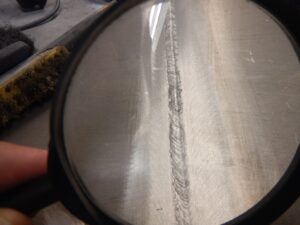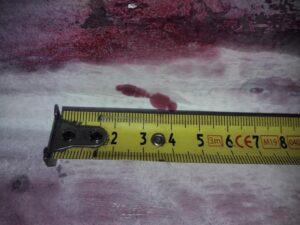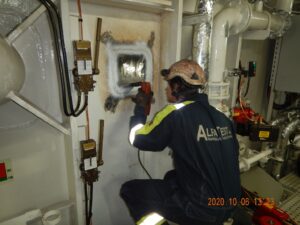AlfaTest AB
NDT. Non-Destructive Testing
Non-Destructive Testing
The NDT services offered by AlfaTest AB have been accredited to ISO/IEC 17025 by SWEDAC for six different NDT methods, indicating the company’s dedication to quality and competency in its services.
- Visual Testing (VT)
- Magnetic Particle Testing (MT)
- Penetrant testing (PT)
- Ultrasonic Testing (UT)
- Radiographic Testing ( RT)
Additionally, AlfaTest AB is an approved and certified testing laboratory in the maritime industry, by DNV, ABS, and RINA. The company’s experienced NDT staff is certified to ISO 9712, EN 473, or SNT-TC-1A, which are recognized certification schemes that demonstrate an individual’s competence in NDT. These accreditations and certifications reflect AlfaTest AB’s reliability and expertise in providing NDT services with a strong commitment to quality and excellence.
Our Services:
More about NDT
Non-Destructive Testing (NDT) refers to a set of techniques that are used to assess the integrity and properties of materials, components, or structures without causing any damage to them. These methods employ various principles, such as electromagnetic, acoustic, thermal, and radiographic, to identify flaws or defects in materials.
Non-Destructive Testing is capable of detecting surface and sub-surface defects, including cracks, voids, and inclusions. It can also measure physical properties such as thickness, hardness, and conductivity. Industries such as aerospace, automotive, construction, and manufacturing commonly use NDT methods to ensure material and structure quality and safety.
Ultrasonic testing, X-ray radiography, magnetic particle inspection, and eddy current testing are examples of widely used NDT methods.
The benefits of NDT
There are several benefits to using non-destructive testing (NDT) methods, including:
- Cost-effectiveness: methods are typically less expensive than destructive testing methods as they do not require the dismantling of the material or structure being tested. This allows for cost savings in terms of material replacement and downtime.
- Non-destructiveness: methods do not damage the material or structure being tested, making it ideal for evaluating critical components that cannot be easily replaced.
- Time-saving: methods can quickly identify defects or flaws in materials and structures, reducing the time required for testing and evaluation.
- Increased safety: methods can help identify potential hazards before they become serious problems, leading to increased safety and reducing the risk of accidents or failures.
- Improved quality control: methods can be used to ensure the quality of materials and structures, leading to improved product reliability and customer satisfaction.







